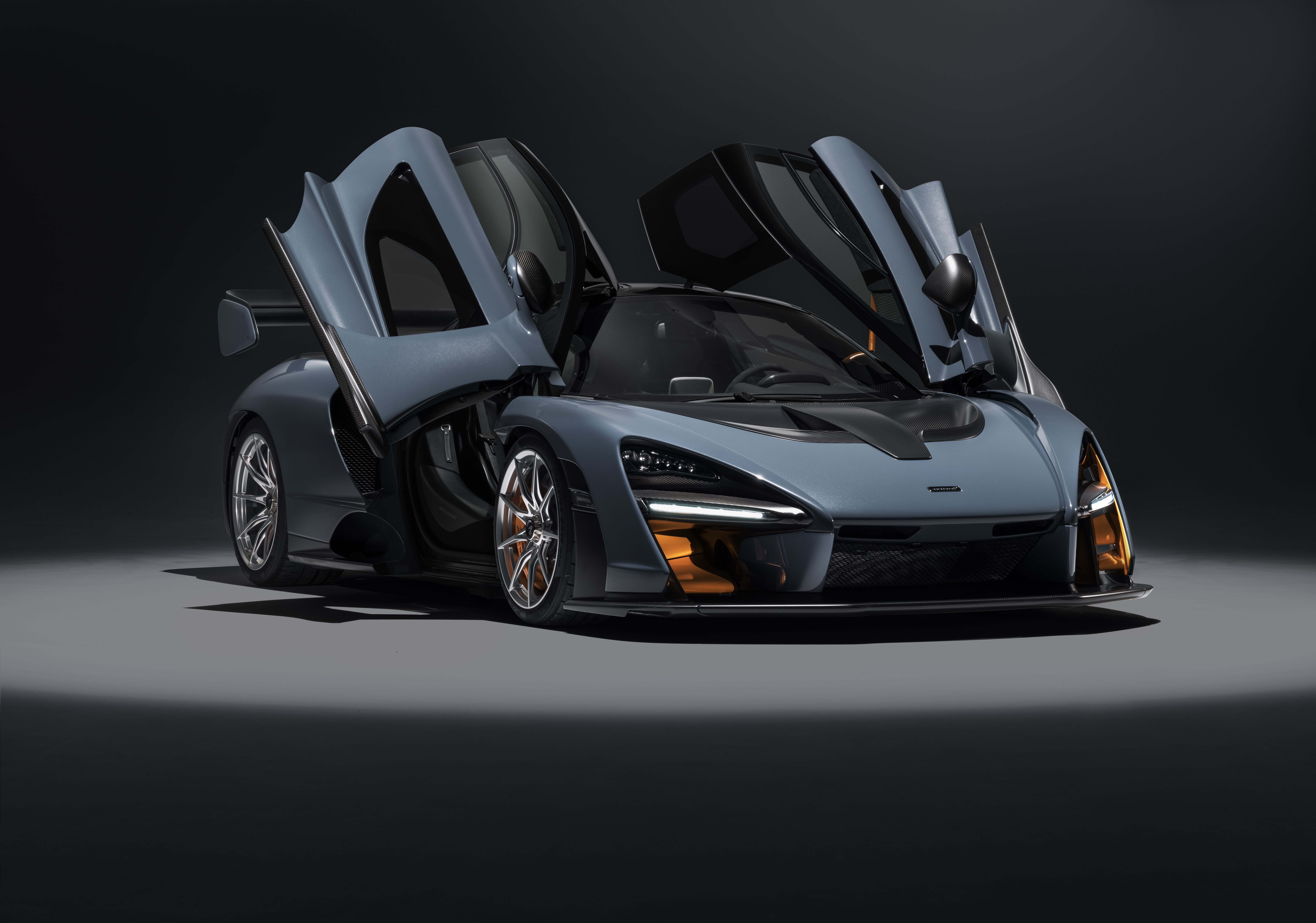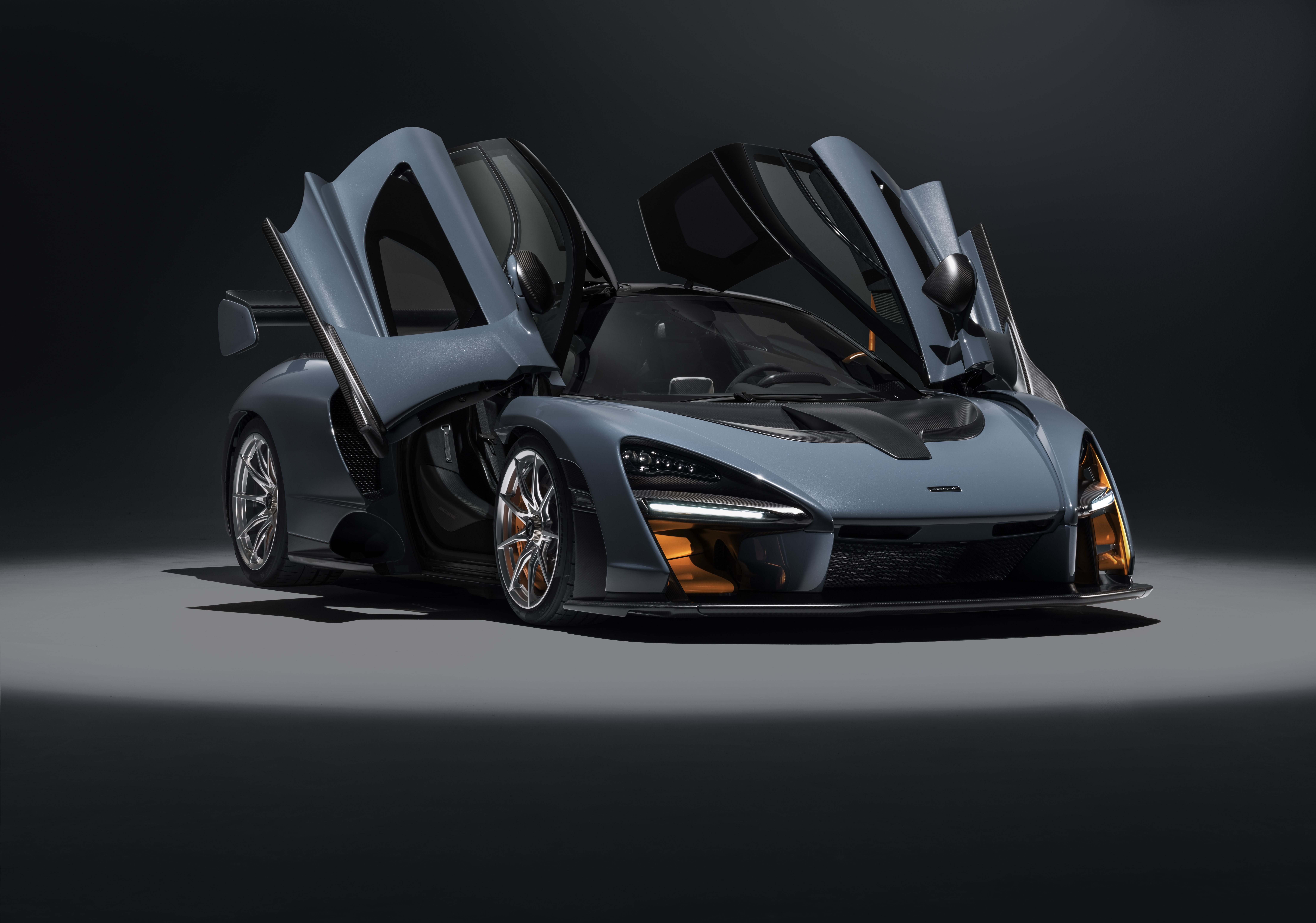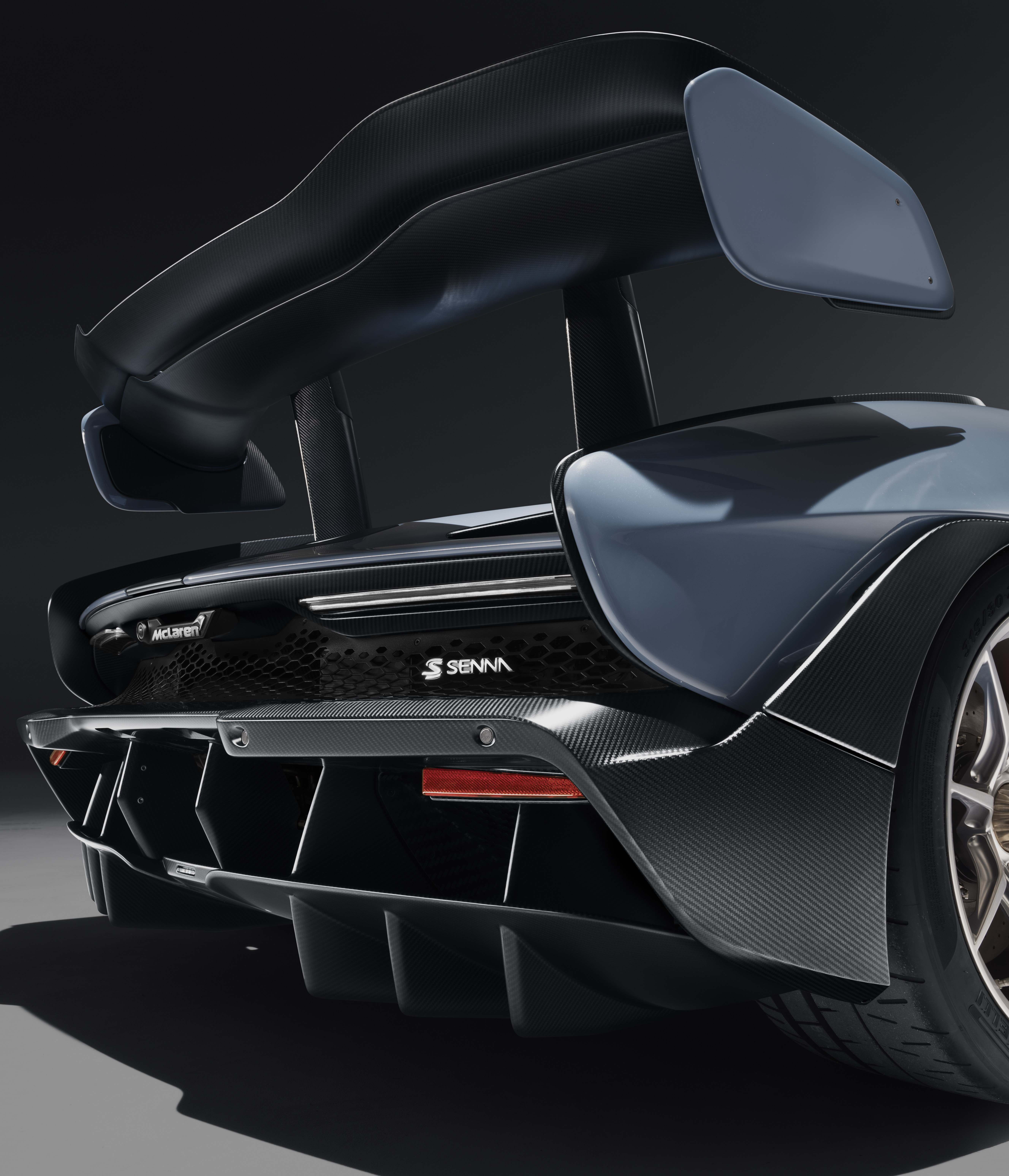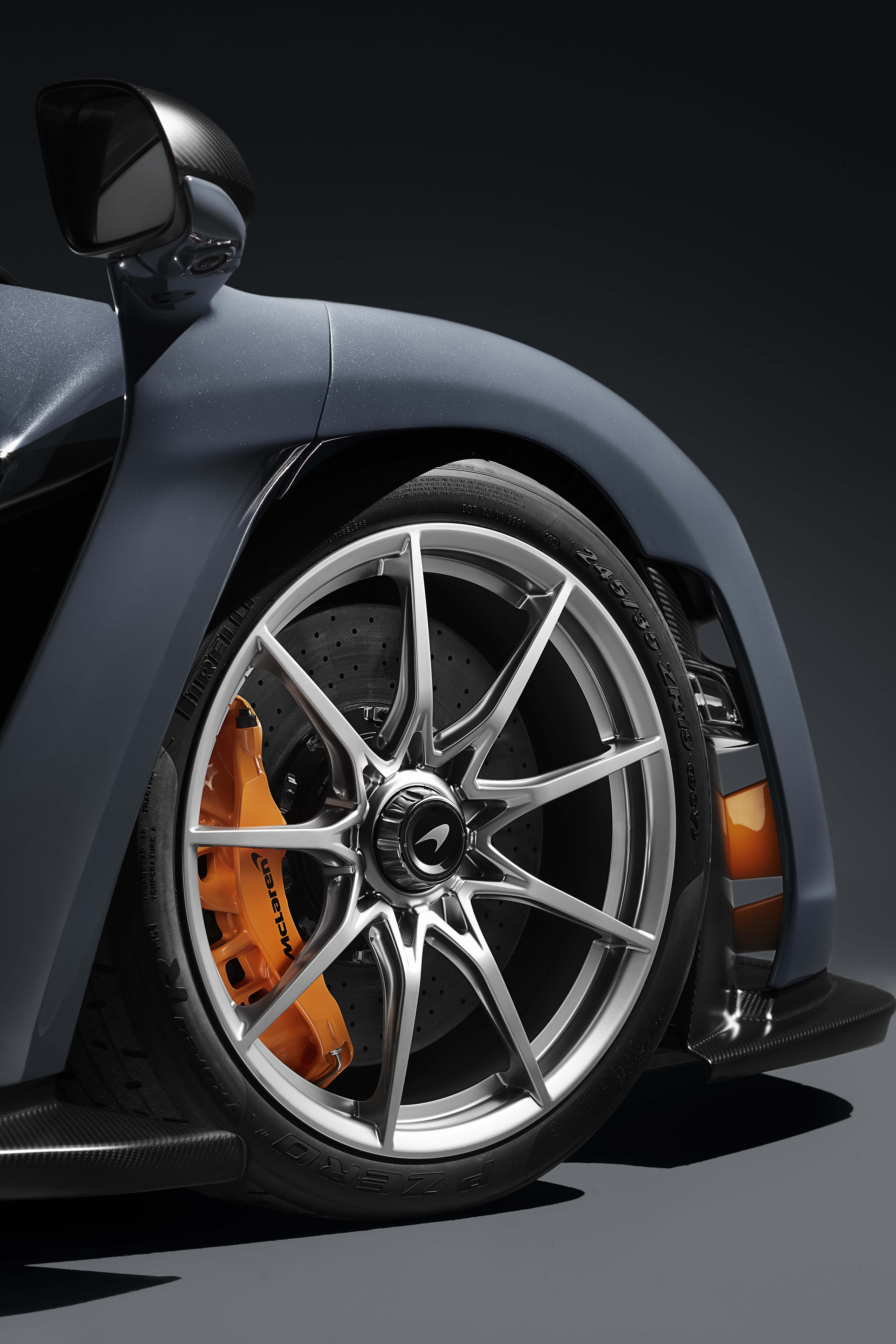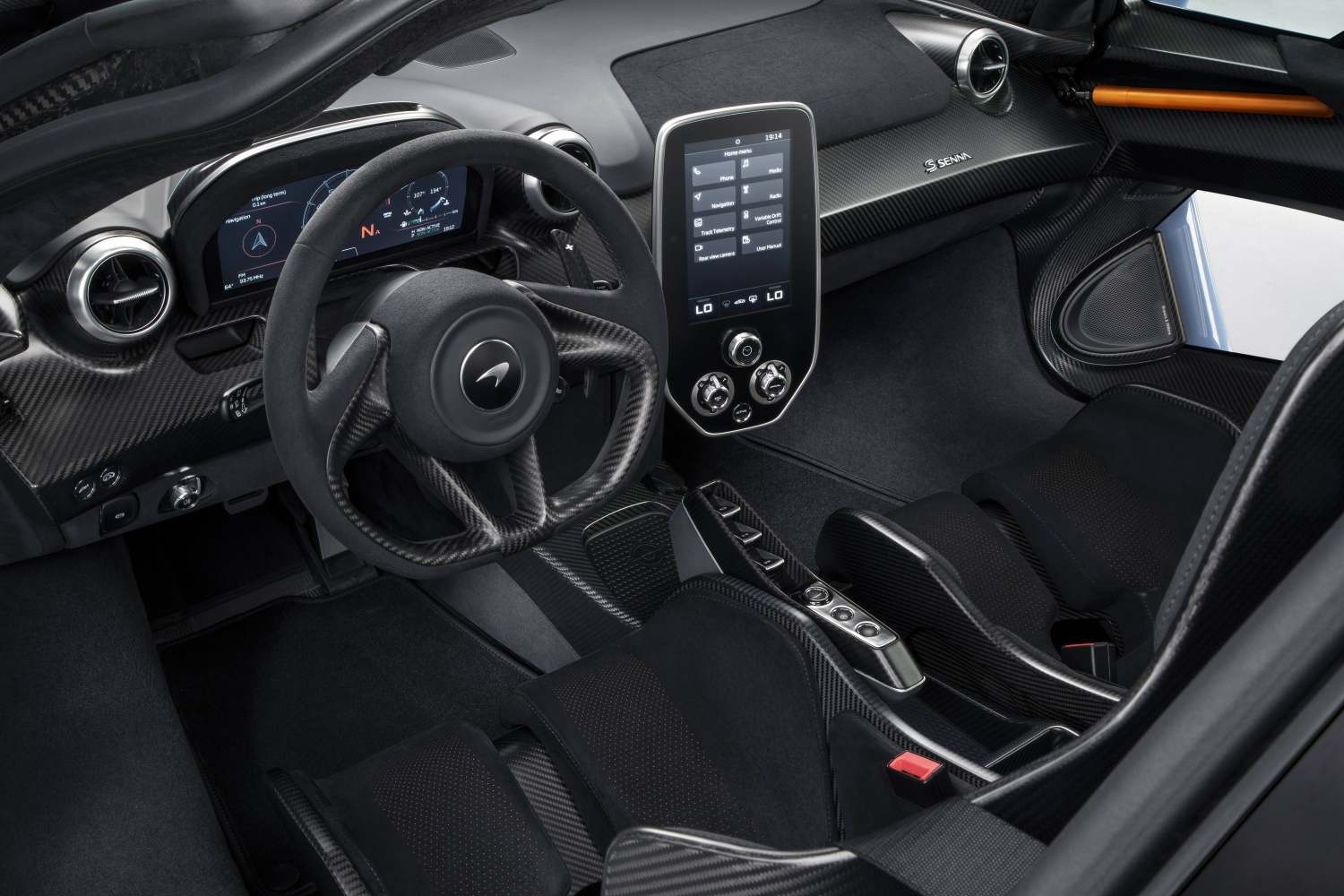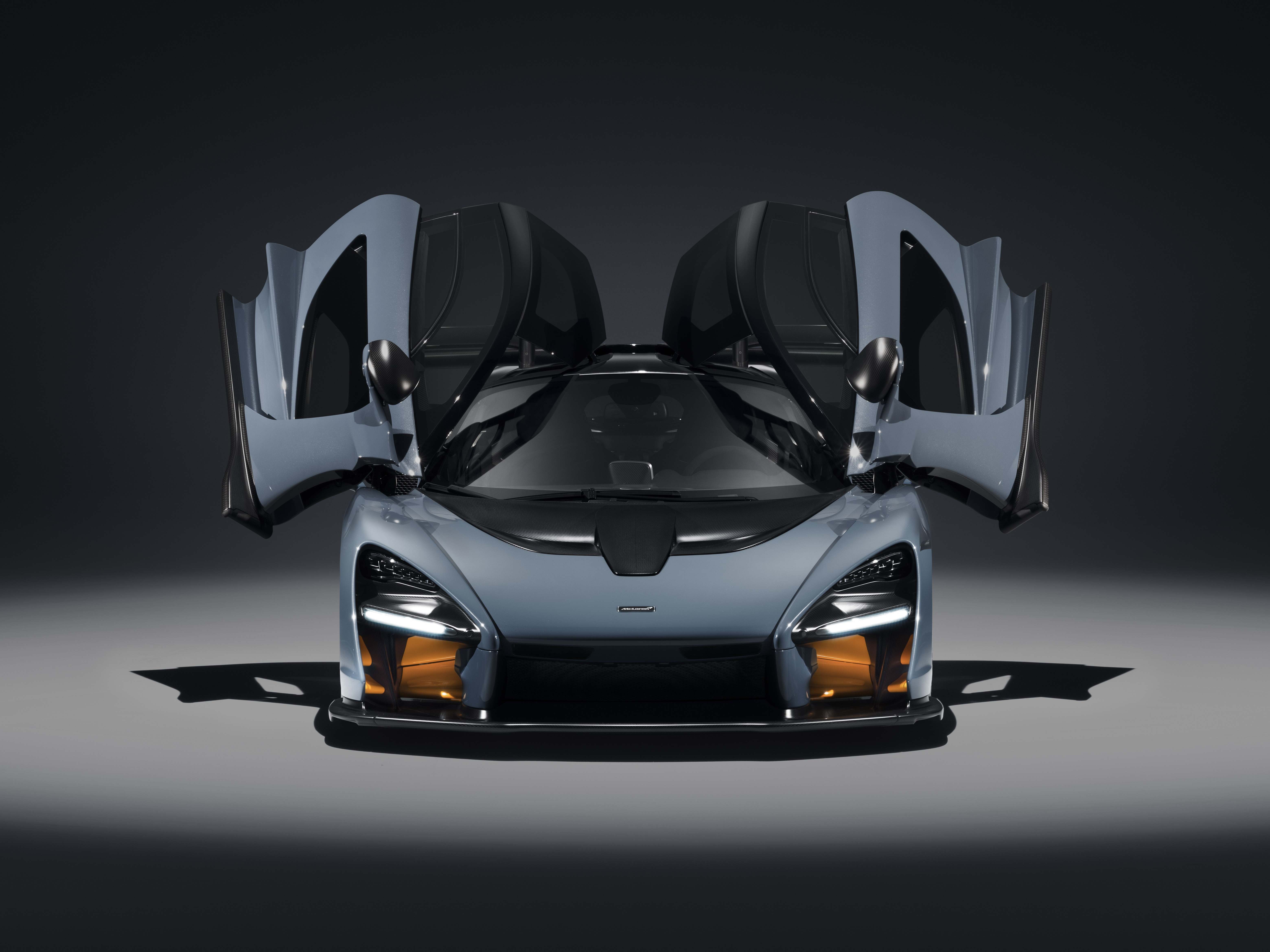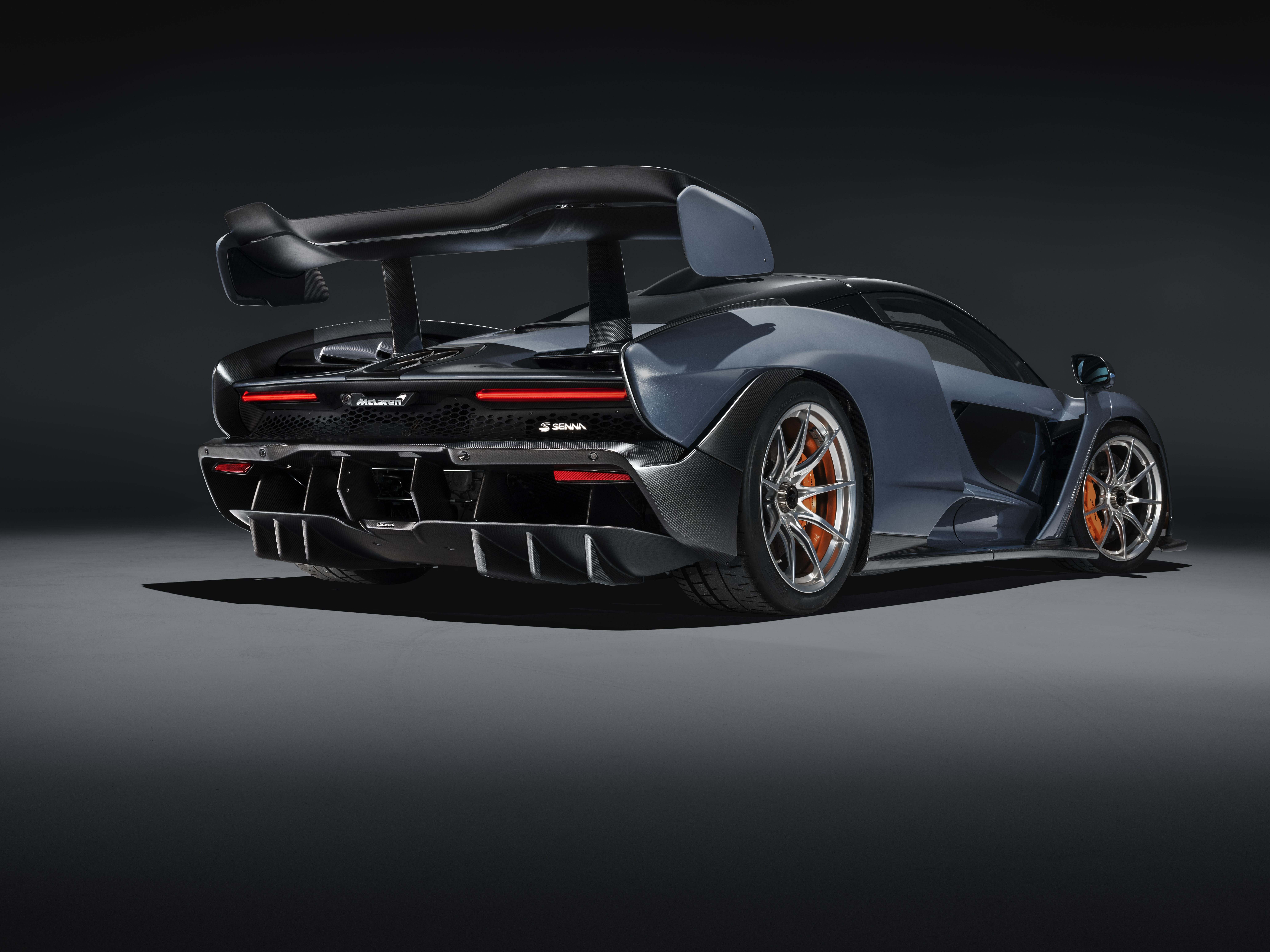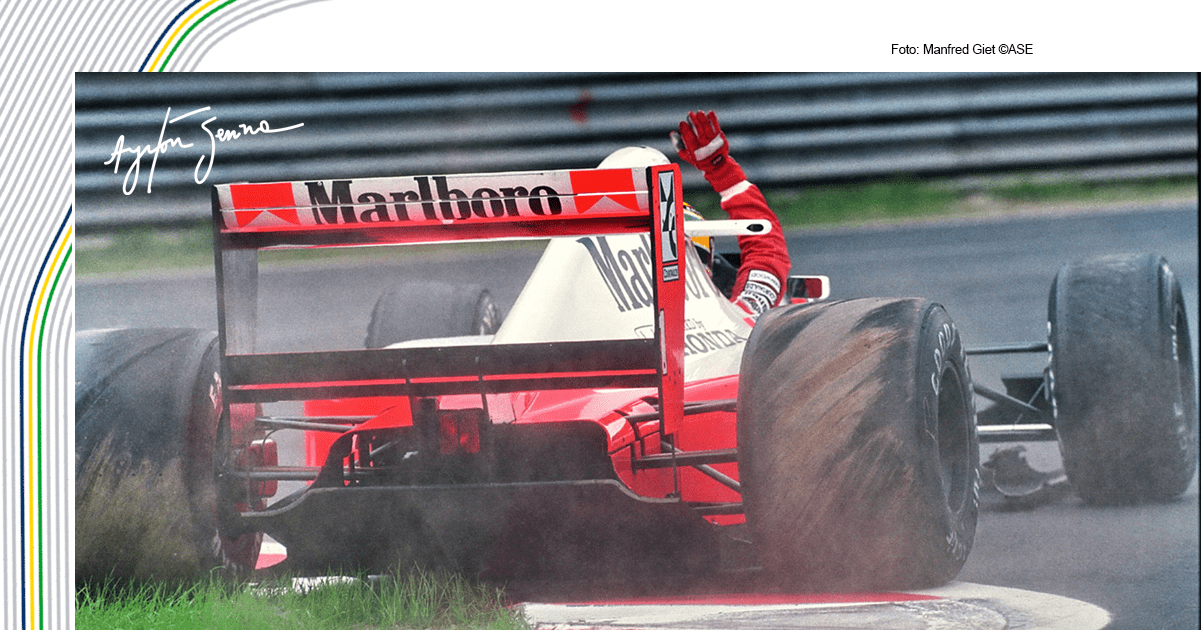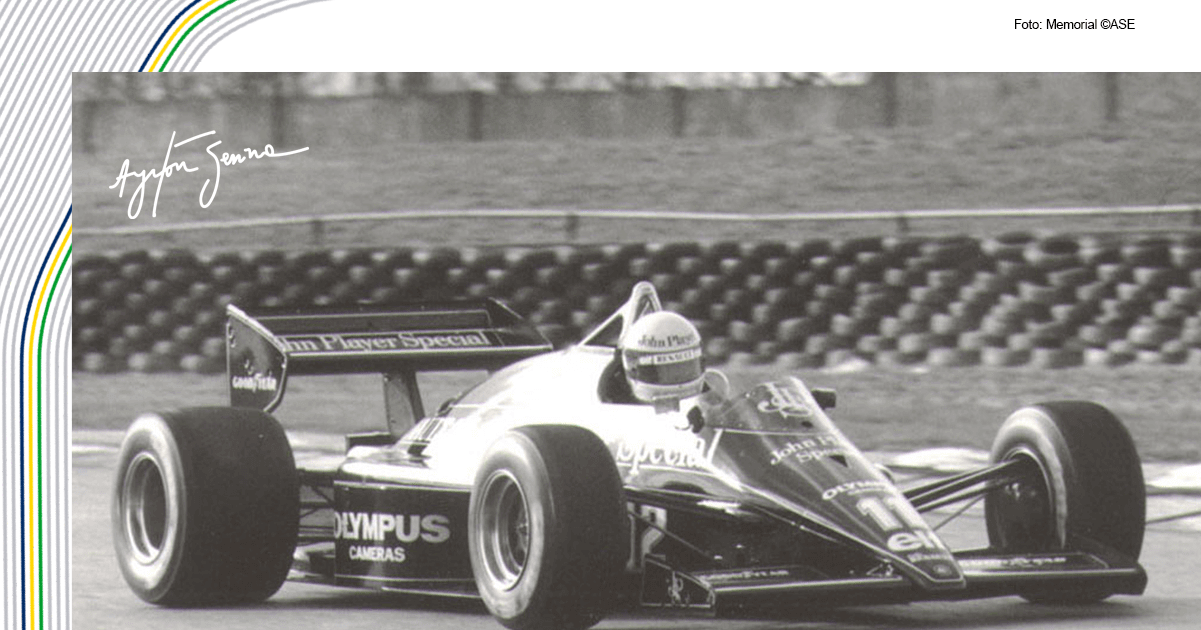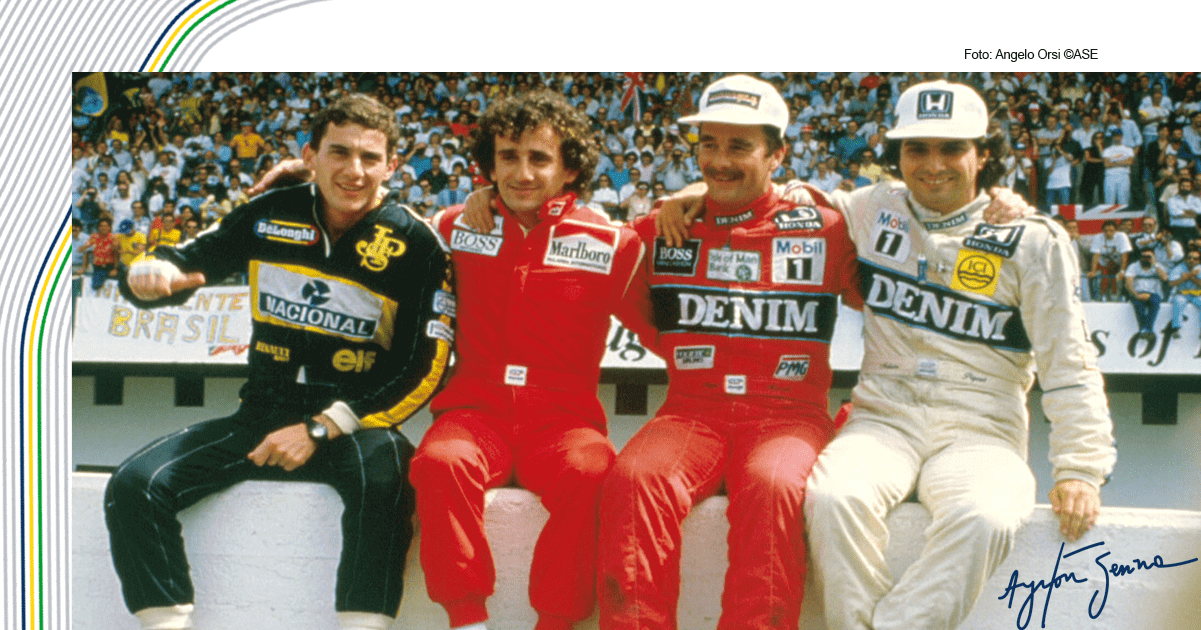- McLaren Senna will makes its public debut on March 6, 2018 at the 88th Geneva International Motor Show
- Body design, rear wing and active aero front and rear are key to generating 800kg of downforce at 250km/h (155mph)
- Acceleration from 0-200kmh (124mph) in 6.8 seconds; 0-100km/h (62mph) in 2.8 seconds; maximum speed of 340km/h (211mph)
- Carbon fibre Monocage III chassis and carbon fibre body panels integral to the McLaren Senna being the lightest road car McLaren has built since the iconic F1 at 1,198kg*, giving a power-to-weight ratio of 668PS (659bhp) per tonne
- Production limited to 500 units, all hand-assembled at the McLaren Production Centre in Woking, Surrey, England in a 300-hour process – and all already allocated
True to the legendary abilities of the racing driver whose name it bears, the McLaren Senna has been designed, engineered and developed to be the ultimate road-legal McLaren track car. With 800PS (789bhp) and 800Nm (590b ft) from its 4.0-litre, twin-turbocharged V8 – McLaren’ s most powerful-ever internal combustion engine in a road car – and the ability to generate a staggering 800kg of downforce, the 1,198kg* McLaren Senna delivers the purest possible connection between driver and car.
Performance is breathtaking. The McLaren Senna can cover 0–100km/h (62mph) in 2.8 seconds;
0-200km/h (124 mph) is achieved in just 6.8 seconds and a standing quarter-mile (402m) in only
9.9 seconds. Impressive though the straight-line acceleration and maximum speed of 340km/h
(211 mph) are, the true depth of the performance credentials of the new Ultimate Series McLaren will be revealed when it calls on downforce of up to 800kg on a circuit, against the stop-watch.
“The McLaren Senna is a car like no other: the personification of McLaren’s motorsport DNA, legalised for road use but designed and developed from the outset to excel on a circuit. Every element of this new Ultimate Series McLaren has an uncompromised performance focus, honed to ensure the purest possible connection between driver and machine and deliver the ultimate track driving experience in the way that only a McLaren can.”
Mike Flewitt, Chief Executive Officer, McLaren Automotive
The McLaren Senna combines low vehicle weight, extreme power, aerodynamic excellence and a revolutionary, active suspension system to deliver the most responsive and engaging road car experience to date from the British luxury sportscar and supercar maker.
“The McLaren Senna honours my uncle because it is so utterly focused upon the driver, and their absolute connection with the vehicle. This engagement, these sensory cues that the driver responds to and relies upon, the whole immersive experience, has been at the heart of the development from the very start.”
Bruno Senna, racing driver, nephew of Ayrton Senna and McLaren ambassador
The McLaren Senna is priced at £750,000 including taxes (UK). Just 500 will be built, each hand-assembled in a 300-hour process at the McLaren Production Centre in Woking, Surrey, England. All are assigned to buyers, the one remaining build allocation having been auctioned in December 2017 at a private event for McLaren customers. The winning bid was £2 million, with the proceeds going to the Ayrton Senna Institute, a non-profit organisation dedicated to providing education for nearly two million unprivileged children and youngsters in Brazil.
“The design language of the McLaren Senna is extremely aggressive and different from any previous McLaren – because no other road-legal McLaren has had to fulfil such an uncompromising brief,” explained Rob Melville, Design Director, McLaren Automotive. ” When you see the car for the first time, you know instantly how single-minded and focused it is; to meet the performance targets we have had to go to an entirely different level from even the McLaren P1™.”
Carbon fibre construction
McLaren pioneered carbon fibre technology in Formula 1 and the Monocage III carbon structure at the centre of the McLaren Senna can trace its lineage back to 1981 and the McLaren MP4/1, the first carbon Formula 1 racing car. Monocage III is the strongest carbon fibre monocoque ever created by McLaren for a road car and features an innovative double-walled rear assembly that provides an in-built protective roll cage. Monocage III is optimised to create the lightest structure possible and is one of the reasons why, at 1,198kg*, the McLaren Senna is the lightest road car McLaren has built since the F1.
M840TR engine and transmission
The twin-turbocharged V8 engine, which is coded M840TR, features a flat-plane crankshaft, race-inspired dry sump lubrication and lightweight connecting rods and pistons that reduce mass in the powertrain. Ultra-low inertia twin-scroll turbochargers and electronically-controlled wastegates give an immediate sense of retardation, enhancing engine responsiveness. Lightweight camshafts and pistons unique to the McLaren Senna and externally repositioned dump valves are among other Senna-specific components. Additionally, ion sensing with individual sensors per cylinder enables higher pressures and temperatures than on other McLaren engines.
“The McLaren Senna delivers real performance – accessible and attainable because of an intuitive connection, while at the same time rewarding, exciting and challenging to the very best drivers in the world,” comments Andy Palmer, Vehicle Line Director – Ultimate Series, McLaren Automotive. “The sensory experience of driving the car is also vitally important: through what a driver feels, hears and sees, we want every moment behind the wheel of a McLaren Senna to deliver the emotional intensity of a convertible and the pure connection of a race car.”
The top speed of the McLaren Senna is not limited in Race mode, but above 250km/h (155mph) the aero blades and rear wing are actively trimmed to preserve peak downforce levels, which would otherwise continue to increase with speed and impart excessive load on the suspension and tyres. A driver can adjust handling parameters using the Active Dynamics Panel to access Comfort, Sport and Track modes; Race mode is selected via a button in the roof-mounted panel.
Due to its extreme performance, the McLaren Senna features bespoke tyres developed in conjunction with McLaren technical partner, Pirelli. The Pirelli P ZERO™ Trofeo R tyres (245/35 ZR19 at the front and 315/30 ZR20 at the rear) are designed for dry race tracks but are also approved for road use.
Further information about the ultimate road-legal, track McLaren can be found at: http://cars.mclaren.com/ultimate-series/mclaren-senna.
